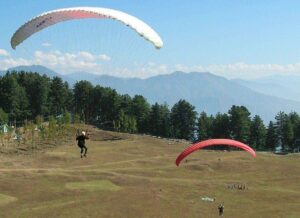Last Updated on December 9, 2021 at 11:06 am
A major horticulture produce of Kashmir, the harvesting season of walnut starts in the month of August and goes till the month of September.
89,000 hectares of land cultivates around 2.66 lakh metric tonnes of walnut. The export of walnuts of Kashmir provides INR 120 crore annually and production of walnut provides 98 percent of the total walnut production in India.
The production of walnut is a major source of employment for scores of people. But plucking of walnuts is most dangerous and risky job in valley. Plucking of walnuts by achanan woel or walnut thrasher involves climbing up the highest trees at a height of 30–45 metres. Maintaining a balance, beating a branch of trees with a long bamboo-like stick made from willow or some other wood makes a walnut fall on ground. Then they are collected in bags, peeled, washed then dried in sun and sold in the market.
But this method of plucking walnuts involves a major risk to human lives. Maintaining of balance on the trees, climbing up barefoot, beating the branch involves a risk of person making fall from trees. This crude traditional method for the walnut harvest has made many people fall from trees, resulting in death or serious injuries.
Dr Bashir Ahmad Choudhary, an orthopaedician who treats several injuries caused by falls from walnut trees said that many people suffer head, brain, spinal, chest, abdominal, and limb injuries. Choudhary added that sometimes the injuries are very serious leading to lifetime paralyses.
As per reports, in last few days at least six people lost their lives and three have been seriously injured after falling from walnut tree. Poswal, a 33-year-old man from Shuhama in Ganderbal district said that since past few days many such incidents have happened and added that before climbing the tree he knows it can be life-threatening but there is no other work for him.
As per experts traditional harvest practices involves lack of non-slip boots and helmets which leads to these incidents. They believe that modern harvesting practices, such as fixing nets below the trees to catch a falling person, can help avoid casualties.



